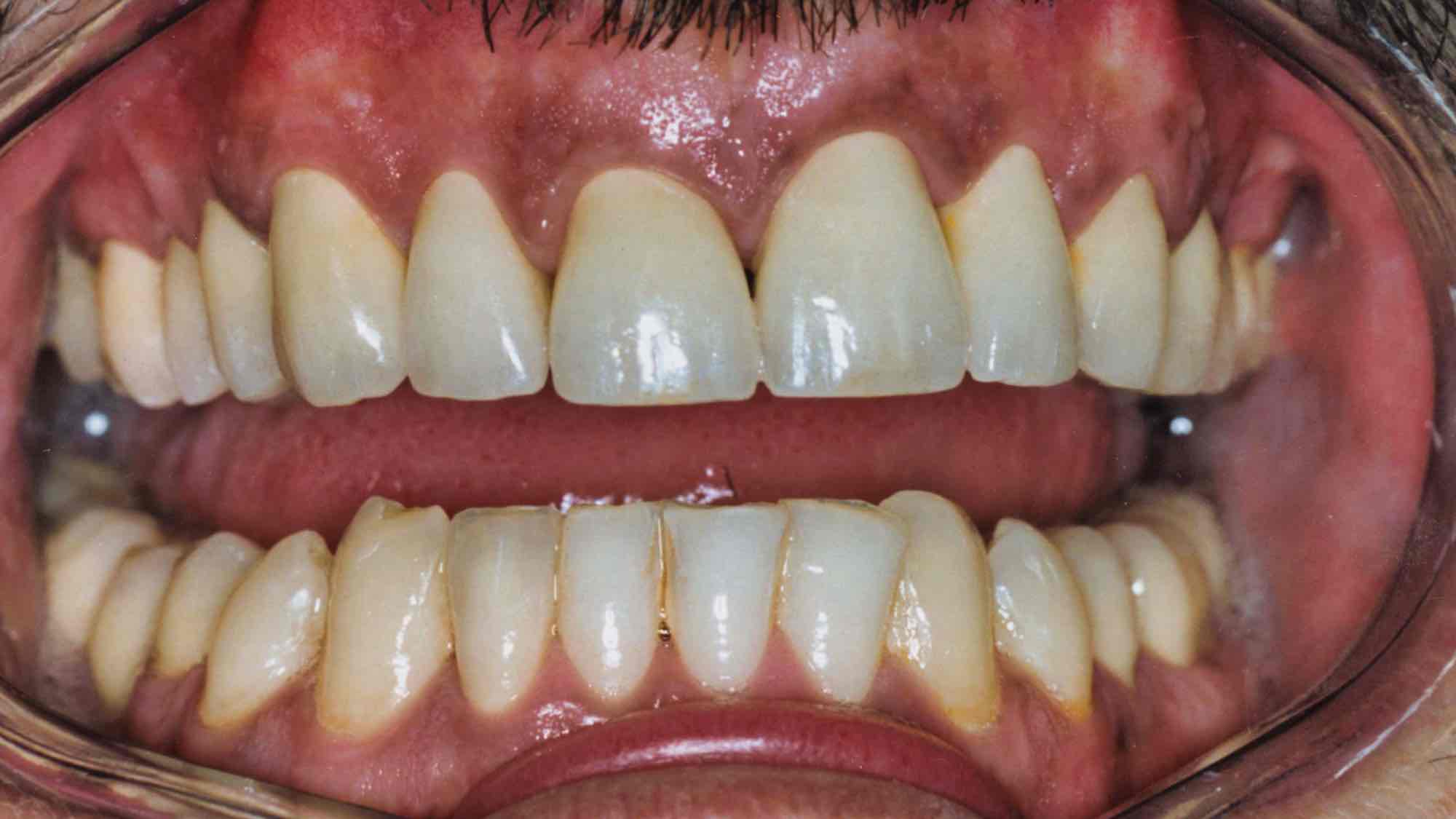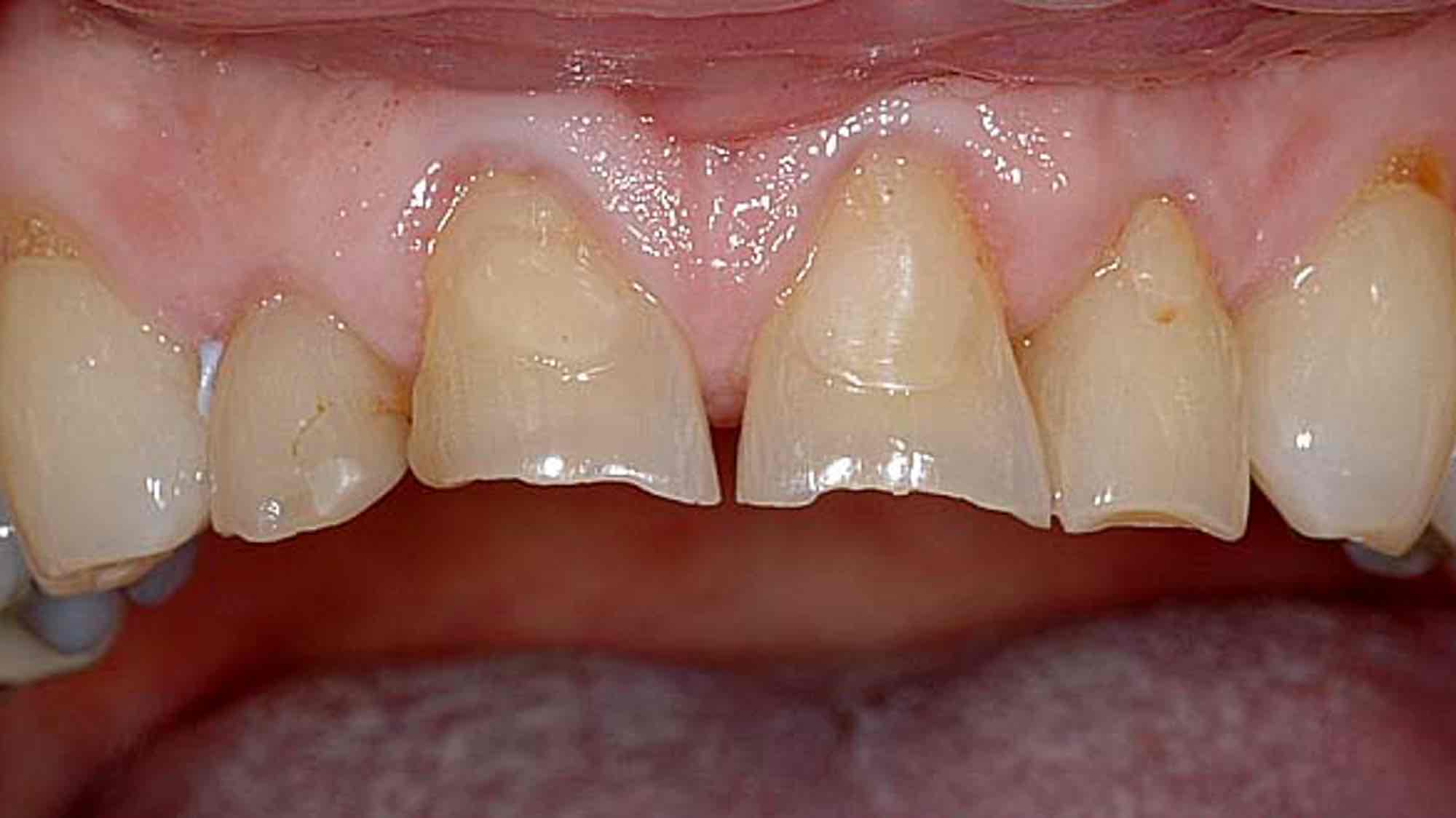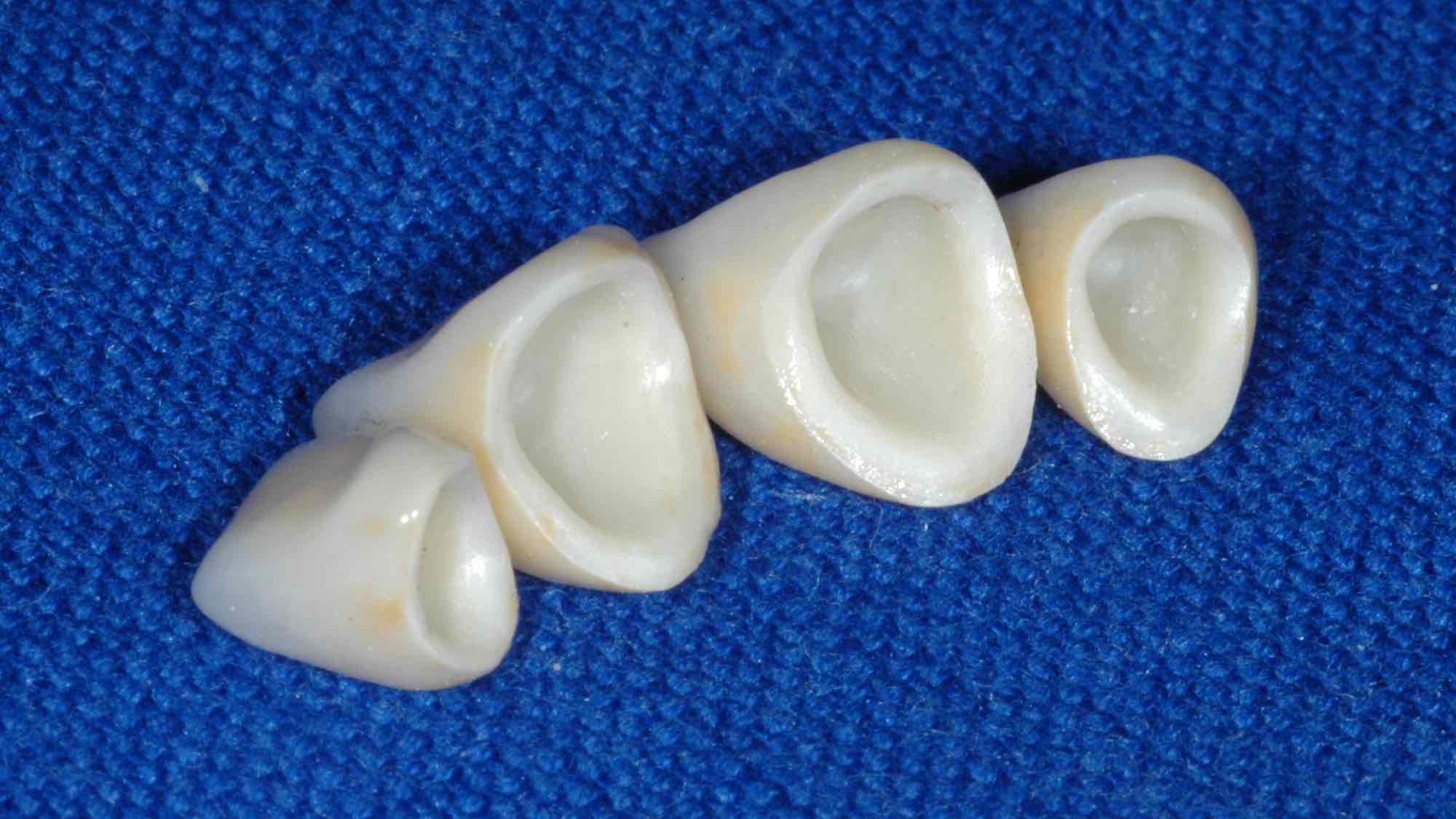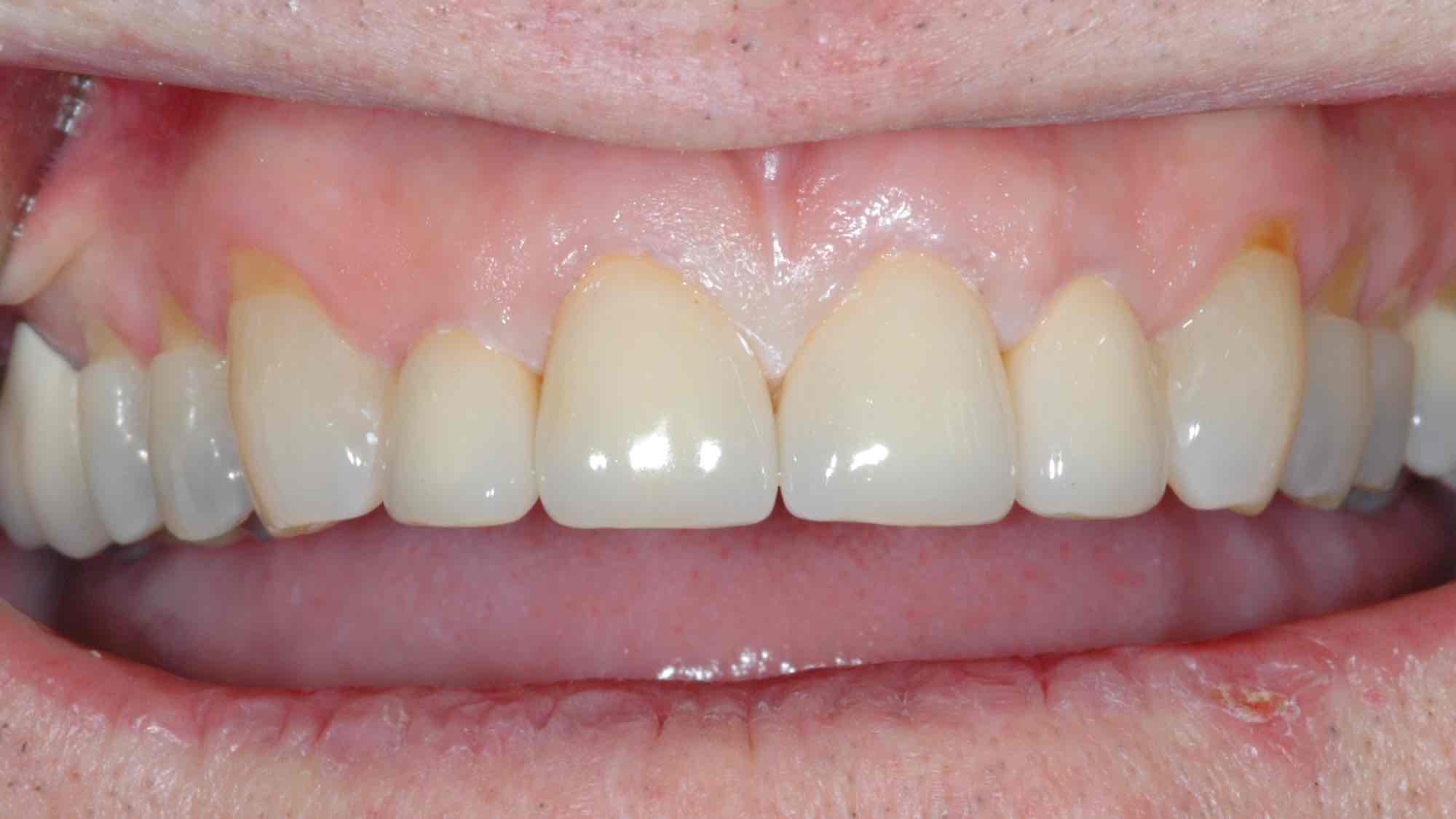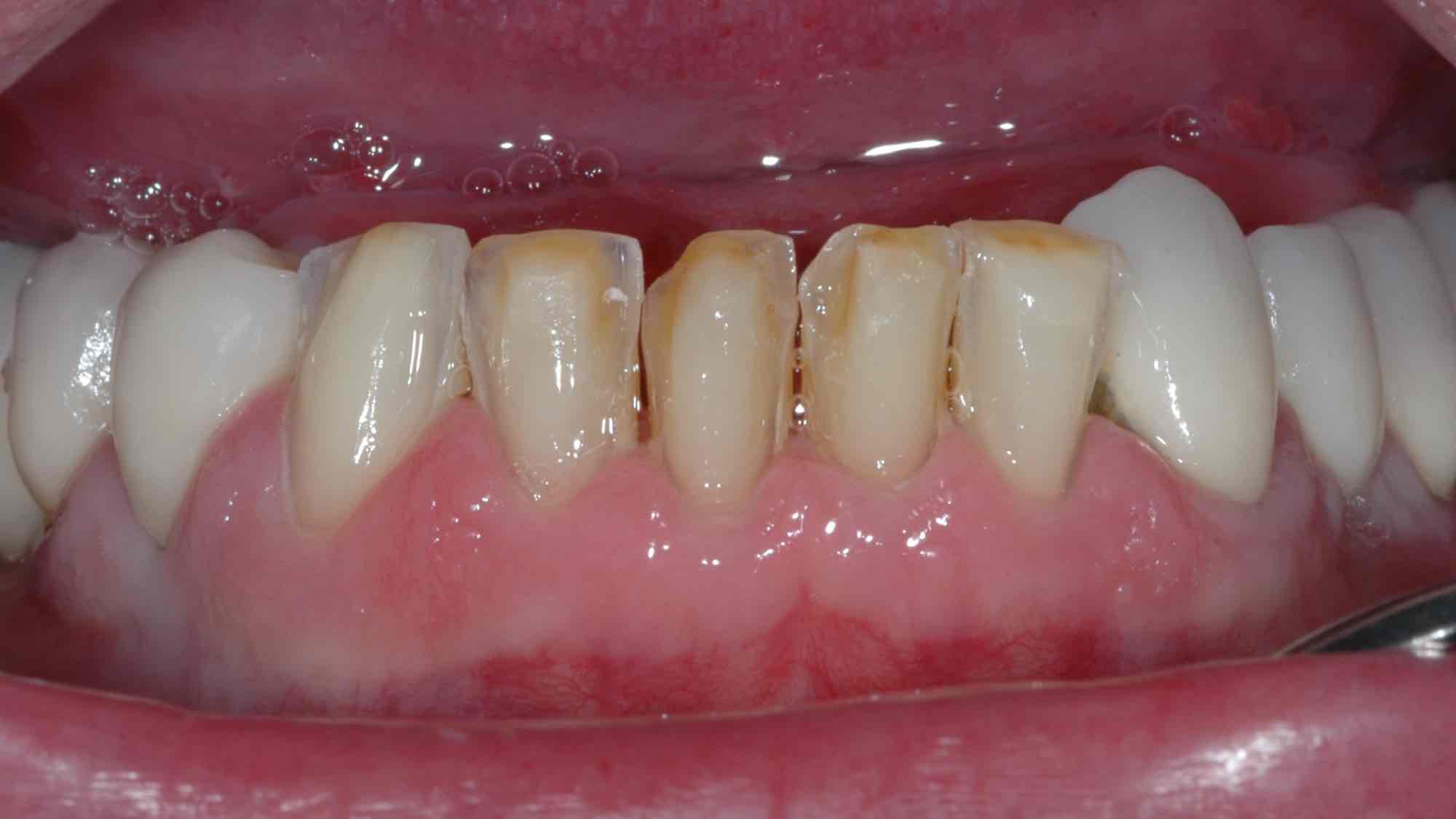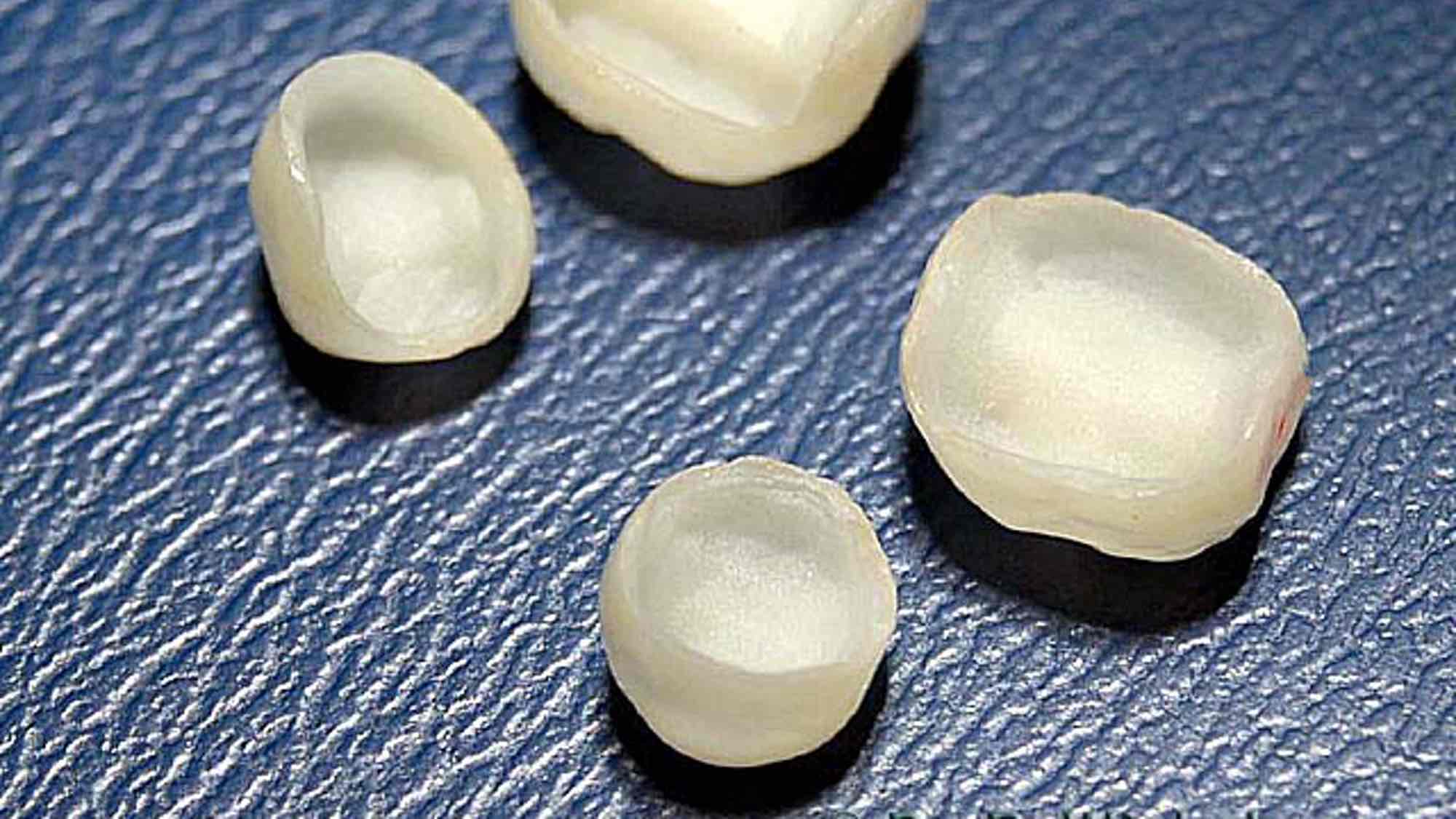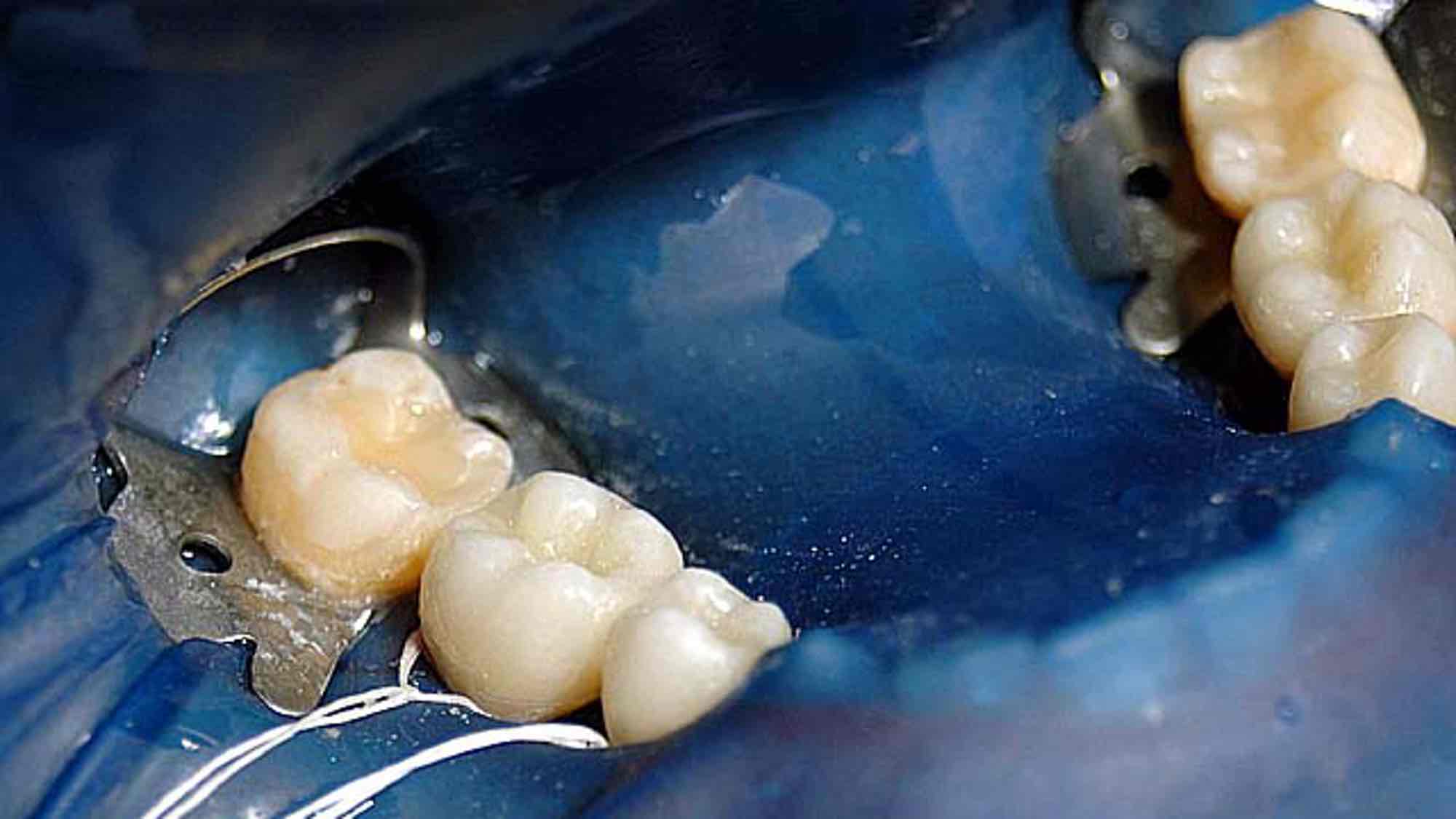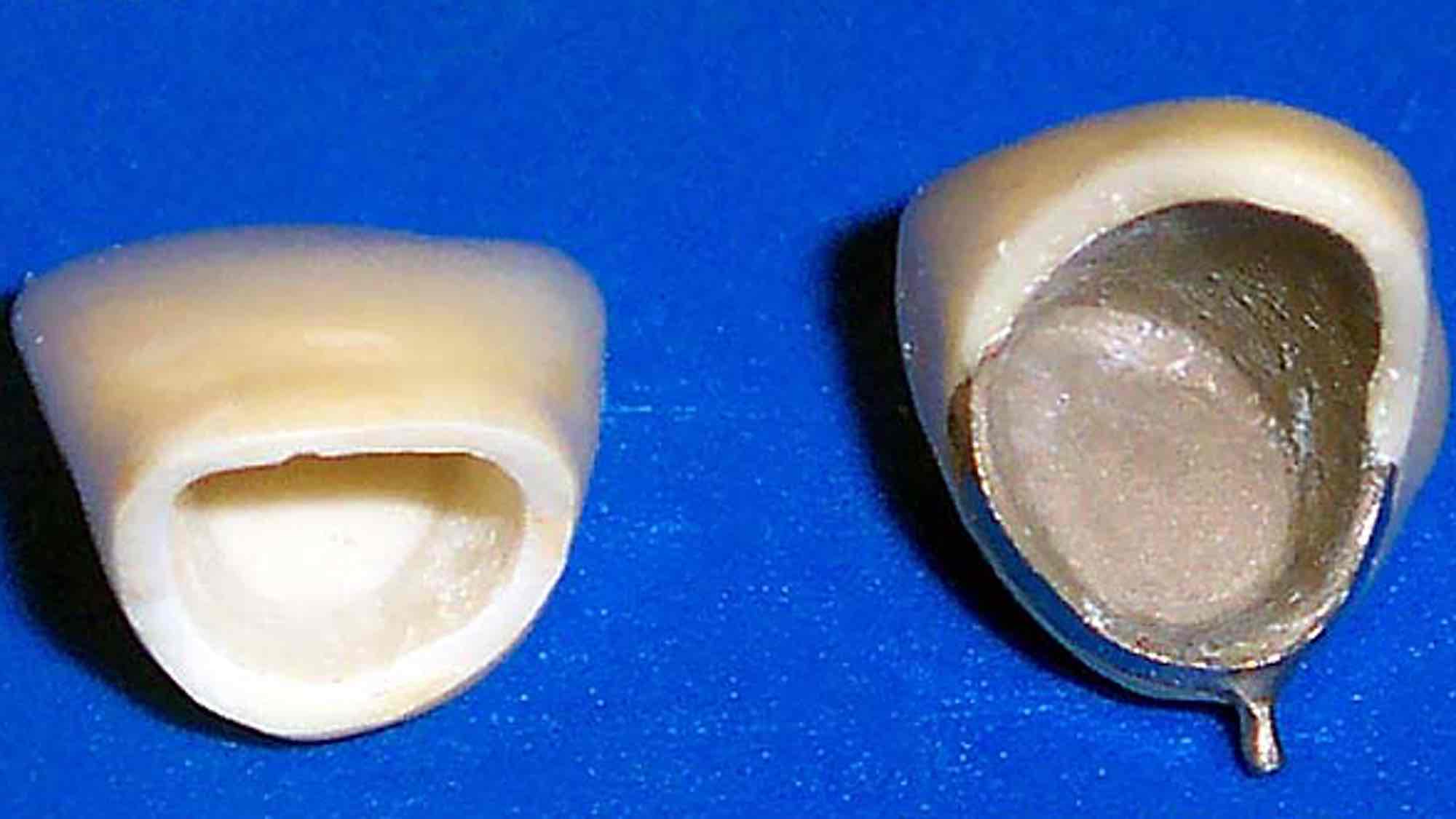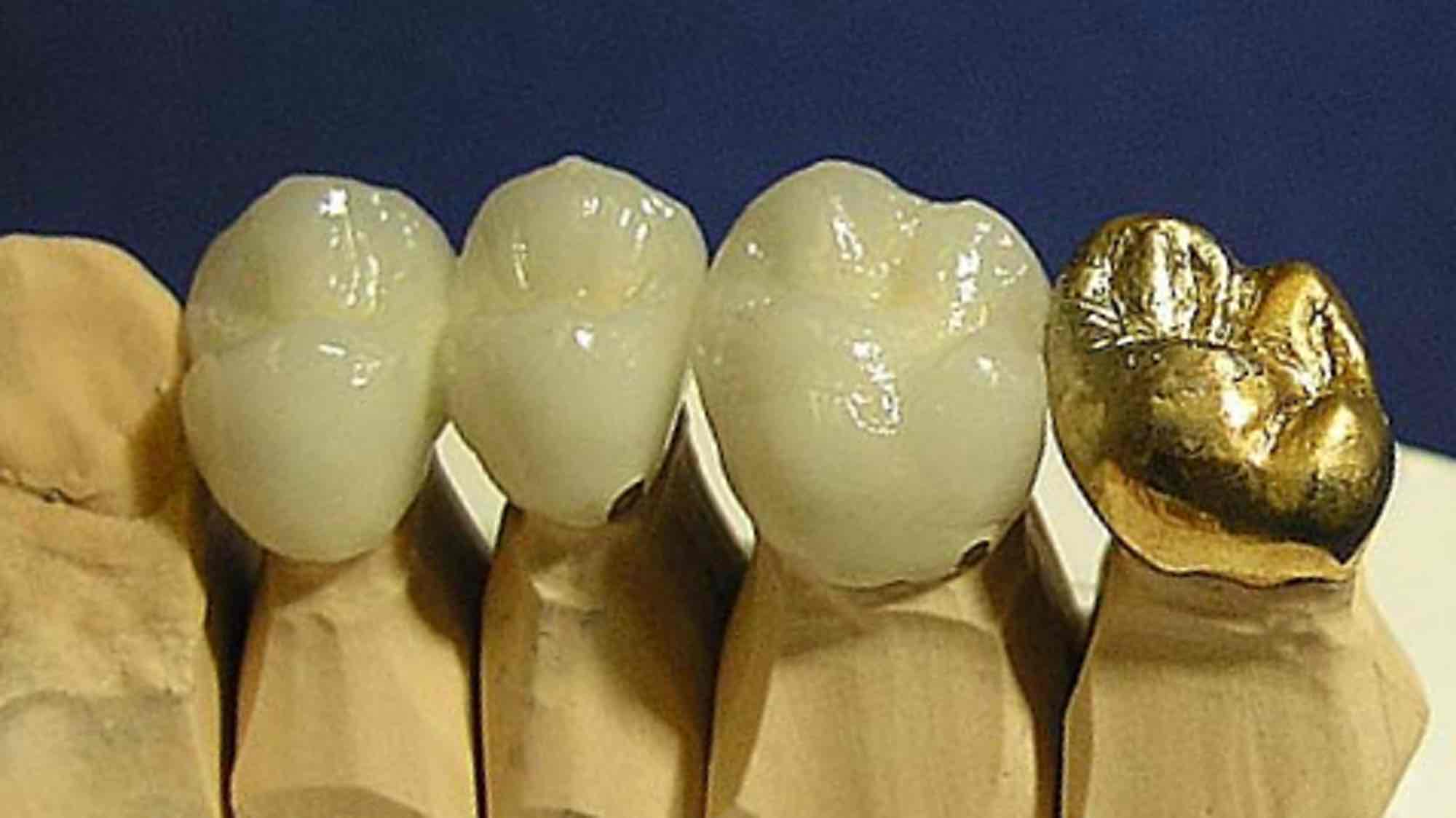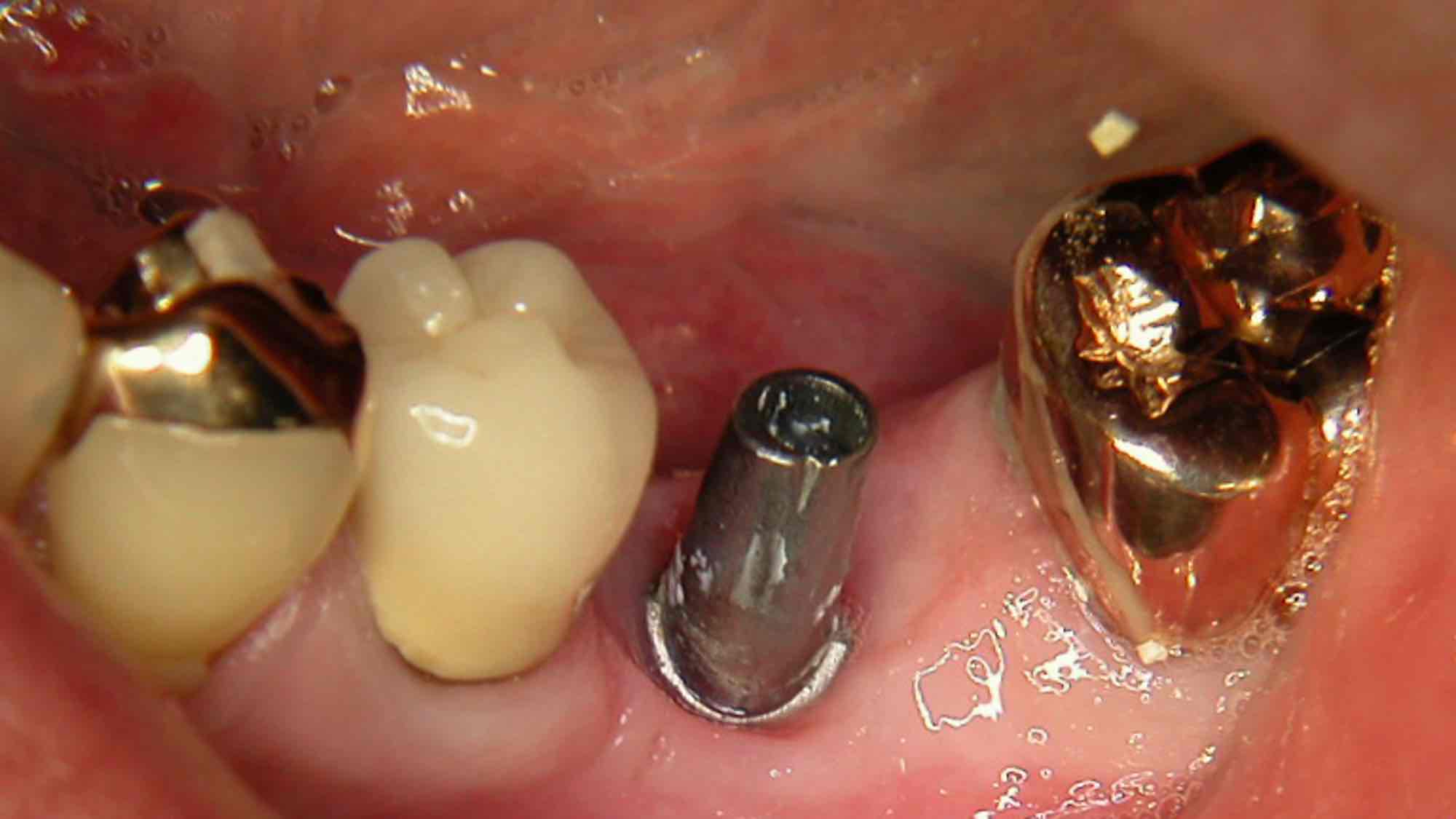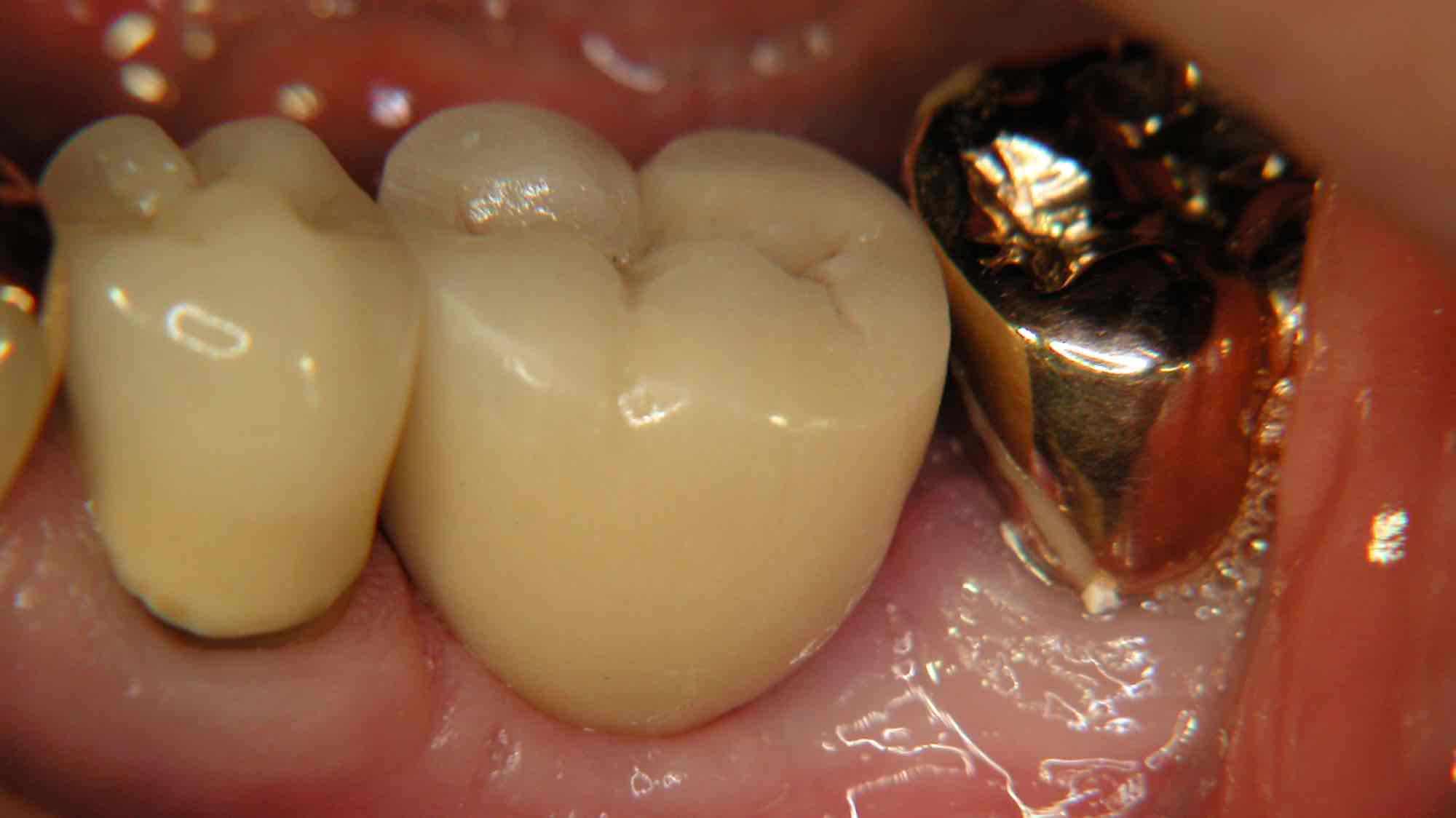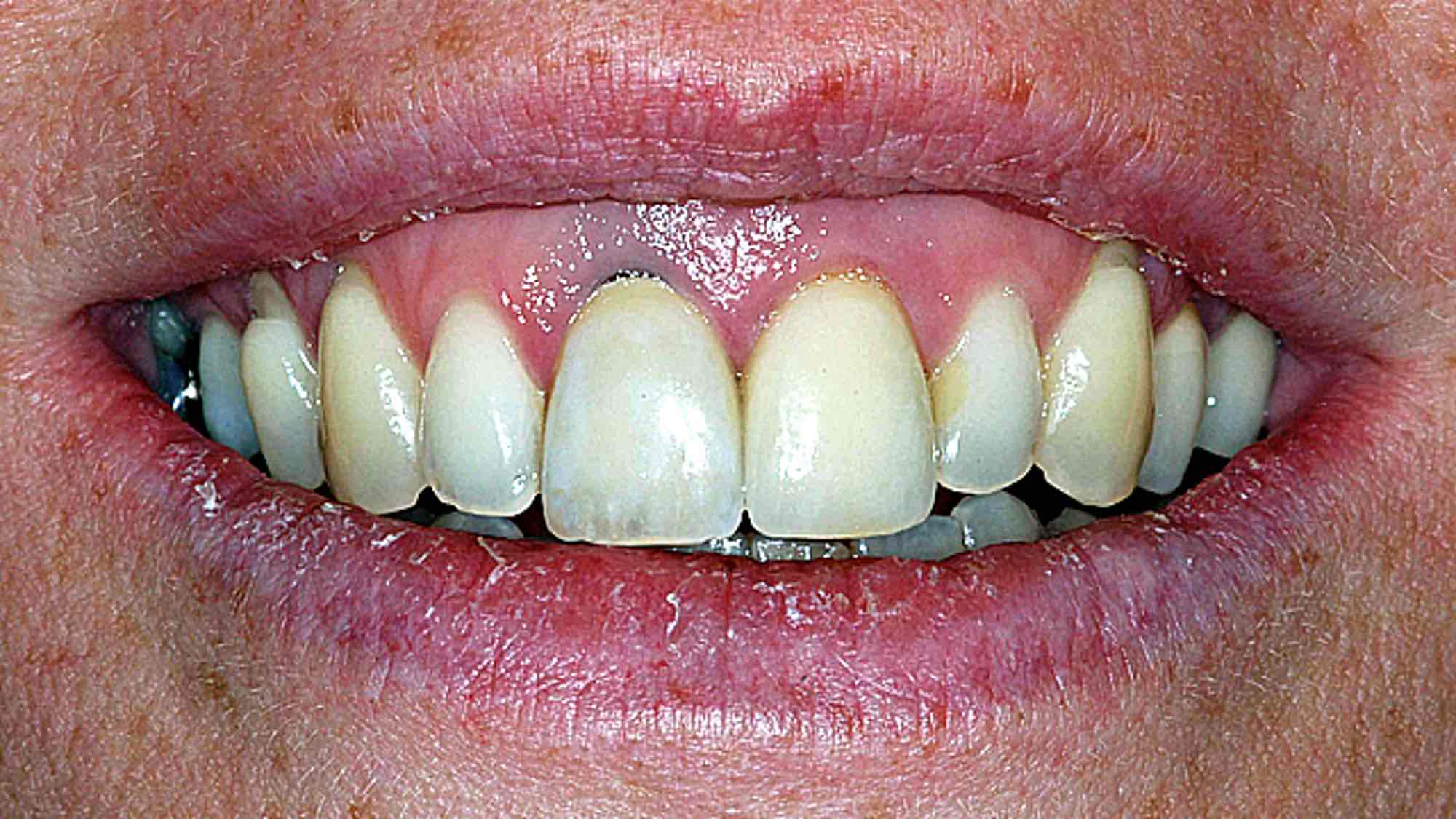Dental crowns
What exactly are dental crowns?
Dental crowns are fixed, artificial tooth caps that completely cover a severely damaged or weakened tooth to restore its form, function, and aesthetics.
These are the main indications for crowns:
- When large portions of the tooth have been lost due to caries, fracture, or other events
- When the tooth is brittle and at risk of breaking after root canal treatment
- When a large filling needs to be replaced
- To secure a bridge
- When a dental implant is to be fitted
Dental crowns are available in a variety of materials, types, manufacturing processes, attachments, and indications.
Dental crowns – differentiated by material
Metal crowns: They are made entirely of metal (e.g., gold or a non-precious metal). This makes them very stable and very durable. Aesthetically… well… it could be much better!
Ceramic crowns or all-ceramic crowns: These are now made of zirconium or lithium disilicate. They are very well tolerated (biocompatible). They are tooth-colored and therefore appear very natural. Manufacturing is significantly more complex than metal crowns and also more technically sensitive!
Veneered crowns (VMK = veneered metal-ceramic): Beautiful on the outside… different on the inside! Ceramic materials are fired in layers onto a metal framework, which requires a great deal of technical expertise. The aesthetics are good. But due to newer materials, this version is no longer up-to-date!
Plastic crowns (usually only for temporary crowns): Quickly adjustable, inexpensive, but with limited durability.
The material of choice today is zirconium! Yes, there are different types of zirconium oxide (zirconium) used in dentistry – particularly for bridges, crowns, and implant prosthetics. These differ in translucency, strength, composition, and clinical application. The most important variants are:
- Classic zirconium oxide (3Y-TZP) = 3 mol% yttrium-stabilized tetragonal zirconia polycrystalline. With a flexural strength of over 1000 MPa, it is ideal for posterior teeth, especially since its color is less translucent than other zirconium variants.
- Translucent zirconium oxide (4Y-TZP) = 4 mol% yttrium oxide stabilized. This zirconium oxide is a good compromise between stability and aesthetics. Its flexural strength is 800–1000 MPa.
- Highly translucent zirconium oxide (5Y-TZP) = 5 mol% yttrium oxide stabilized. With its high translucency, this material is perfect for anterior restorations.
- Multilayer zirconium: This material combines different color layers in a single block to better replicate the color gradient of a natural tooth.
In the past, we dentists made crowns and bridges based on metal alloys. Originally, this was gold, but it quickly became apparent that pure gold was far too soft for a bridge or even a crown. Therefore, gold was alloyed with other metals. Here is a brief overview:
- High-gold alloys: These contain more than 75% gold and are very biocompatible. They are corrosion-resistant and very malleable.
- Medium-gold alloys contain 50%-75% gold. They are easy to process but significantly less expensive than high-gold alloys.
- Low-gold alloys contain less than 50% gold and are even less expensive than medium-gold alloys. However, their corrosion resistance is not what we would like.
- Gold-free alloys: These are usually based on palladium and silver. Very affordable, but not corrosion-resistant. We do not recommend this type of alloy.
Whether metals should be placed in the mouth at all should only be considered once it has been confirmed that the patient is not exposed to (heavy) metals.
Long-term temporaries (e.g., temporary crowns and bridges lasting several weeks to months) are now often made from millable, high-performance plastics – usually using CAD/CAM technology. These materials are biocompatible, resilient, and provide a high-quality aesthetic interim solution.
- PMMA (polymethyl methacrylate) – The classic: Good aesthetics, polishable, plaque-resistant, and available in various tooth colors.
- PEEK (polyetheretherketone) – High-performance polymer: For long-term temporaries, especially in cases of bruxism or metal intolerance. Extremely stable, lightweight, temperature-resistant, biocompatible, but less aesthetic (gray-beige), often with veneers.
- Composite-filled resins: For more aesthetically pleasing long-term provisionals with higher abrasion resistance. With fillers (e.g., glass-ceramic particles) for improved strength. Better polishability than pure PMMA.
Types of crowns
Traditionally, we distinguish between a full crown and a partial crown. Two terms that are essentially self-explanatory.
A full crown covers the entire visible tooth structure, while a partial crown only covers parts of the tooth. There are clear rules that the dentist must follow for the fabrication of both types of crowns. And these rules are very different.
In addition to these types of crowns, there are also post crowns, telescopic crowns, and implant crowns.
Crown manufacturing process
In principle, there are three very different technical manufacturing processes:
Traditionally, an impression is taken of the prepared tooth. A model is created in the laboratory using this “impression.” A wax model of the crown is then created on this model. The wax model is then placed in an investment ring, which is filled with a specialized investment material and heated in a furnace. The wax burns (“melts out”), creating a hollow mold in the shape of the desired restoration. Heated, liquid metal is then poured into this hollow mold. One can easily imagine how long such a process took and how error-prone many of the work steps were. This technique is still occasionally used.
Later, the technique of press ceramics was added. Press ceramics are a glass-ceramic mass (e.g., lithium disilicate) that is processed in the form of ceramic pressed pieces (so-called pellets). The process is similar to the lost-wax casting process used in metalworking (see above). A ceramic pellet is heated in a special furnace (ceramic press furnace) until it becomes plastic (approx. 920–1100°C). The ceramic is then pressed into the hollow mold under high pressure. This technique is now somewhat of a fringe phenomenon.
Today, we have implemented digital dentistry: The tooth is scanned with an intraoral scanner (“digital impression”). The crown is then designed on a computer and milled from a solid block using a special milling machine. Such crowns can be fabricated in a single appointment, so the patient does not have to wear a temporary restoration for a few days. Although we have been using this technology for over 20 years, countless advances are made every year, partly due to today’s extremely powerful computers. This is the future of dentistry!
Fixing crowns
In the past, crowns and bridges were traditionally cemented with a zinc oxide phosphate cement (“Harvard”). However, this cement would wash out over the years, leading to crowns and bridges becoming loose or, in the worst case, caries developing beneath the restoration.
Today, we have cements for metal crowns, VMK crowns, and zirconium crowns that are extremely stable and no longer wash out. This significantly improves the longevity of our restorations.
We can also bond ceramic and zirconium crowns, i.e., adhesively cement them. This leads to improved adhesion and tightness.
Conclusion
If you want to join the winning side, then visit your dentist regularly for preventative care. They’ll also explain your weaknesses when brushing your teeth (dentists have these too!) and what you can do better. And this won’t be explained to you by a health column in the newspaper, but by someone who knows the subject inside out!
Author: drw
If you want to know more
Prospective study of monolithic zirconia crowns: clinical behavior and survival rate at a 5-year follow-up
Long-term clinical outcomes of posterior monolithic and porcelain-fused zirconia crowns: A retrospective cohort study
Outcome of teeth restored with CAD/CAM zirconium dioxide post-cores: a retrospective study with a follow-up period of 3–6 years
Retention and Clinical Performance of Zirconia Crowns: A Comprehensive Review
A 3 years retrospective study of survival for zirconia-based single crowns fabricated from intraoral digital impressions
Example of all-ceramic crowns we made in the early 1990s. Unfortunately, I don’t have a picture showing the initial findings.
Here we see a patient whose upper front teeth had become quite unstable due to grinding. The teeth were very thin. We then restored them with zirconium crowns, creating a very beautiful smile.
A lower jaw anterior after the preparation of chipped teeth. Restoring these teeth is extremely difficult because they are so delicate. The challenge was to ensure that the restoration didn’t look like a “dentist’s office,” but rather natural. Therefore, we didn’t create a perfect “garden fence,” but incorporated slight positioning anomalies.
These are all-ceramic partial crowns that we have adhesively attached under rubberdam.
On the left is an all-ceramic crown, on the right is a metal-ceramic veneer crown with a ceramic margin for better esthetics.
On the right, a cast crown made of a gold alloy. The other three crowns are metal-ceramic crowns—more “old school” these days!
On the right, a cast crown made of a gold alloy. The other three crowns are metal-ceramic crowns—more “old school” these days!
The top image shows the perfectly healed implant. Below, the implant is covered with a PFM-crown (porcelain fused to metal).
Finally, one more highlight: A veneered metal crown on an immediate implant following an accident involving the loss of tooth 21. This photo was taken approximately one year after insertion. – Incidentally, tooth 21 is the right large incisor from the viewer’s perspective.

